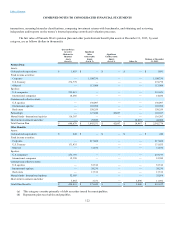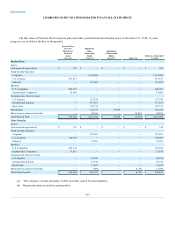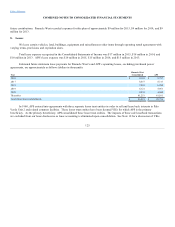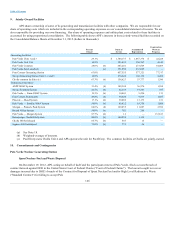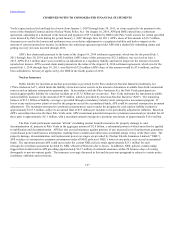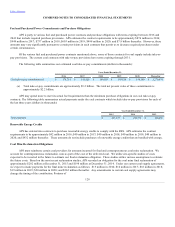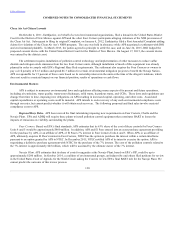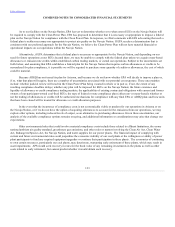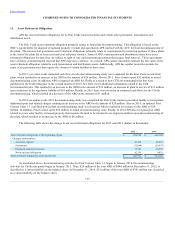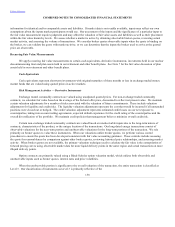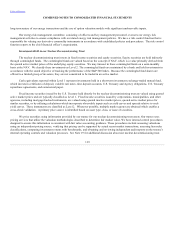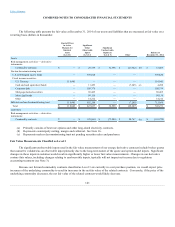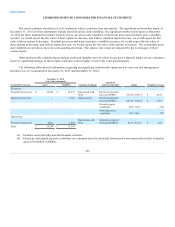APS 2015 Annual Report Download - page 137
Download and view the complete annual report
Please find page 137 of the 2015 APS annual report below. You can navigate through the pages in the report by either clicking on the pages listed below, or by using the keyword search tool below to find specific information within the annual report.
Table of Contents
COMBINED NOTES TO CONSOLIDATED FINANCIAL STATEMENTS
requirements. While EPA has chosen to regulate the disposal of CCR in landfills and surface impoundments as non-hazardous waste
under the final rule, the agency makes clear that it will continue to evaluate any risks associated with CCR disposal and leaves open the
possibility that it may regulate CCR as a hazardous waste under RCRA Subtitle C in the future.
APS currently disposes of CCR in ash ponds and dry storage areas at Cholla and Four Corners. APS estimates that its share of
incremental costs to comply with the CCR rule for Four Corners is approximately $15 million, and its share of incremental costs for
Cholla is approximately $85 million. The Navajo Plant currently disposes of CCR in a dry landfill storage area. APS estimates that its
share of incremental costs to comply with the CCR rule for the Navajo Plant is approximately $1 million.
Clean Power Plan. On August 3, 2015, EPA finalized carbon pollution standards for existing, new, modified, and reconstructed
EGUs. EPA’s final rules require newly built fossil fuel-fired EGUs, along with those undergoing modification or reconstruction, to meet
CO2 performance standards based on a combination of best operating practices and equipment upgrades. EPA established separate
performance standards for two types of EGUs: stationary combustion turbines, typically natural gas; and electric utility steam generating
units, typically coal.
With respect to existing power plants, EPA’s recently finalized “Clean Power Plan” imposes state-specific goals or targets to
achieve reductions in CO2 emission rates from existing EGUs measured from a 2012 baseline. In a significant change from the
proposed rule, EPA’s final performance standards apply directly to specific units based upon their fuel-type and configuration (i.e.,
coal- or oil-fired steam plants versus combined cycle natural gas plants). As such, each state’s goal is an emissions performance
standard that reflects the fuel mix employed by the EGUs in operation in those states. The final rule provides guidelines to states to help
develop their plans for meeting the interim (2022-2029) and final (2030 and beyond) emission performance standards, with three
distinct compliance periods within that timeframe. States were originally required to submit their plans to EPA by September 2016, with
an optional two-year extension provided to states establishing a need for additional time; however, it is expected that this timing will be
impacted by the court-imposed stay described below.
ADEQ, with input from a technical working group comprised of Arizona utilities and other stakeholders, is presently working to
develop a compliance plan for submittal to EPA. In addition to these on-going state proceedings, EPA has taken public comments on
proposed model rules and a proposed federal compliance plan, which included consideration as to how the Clean Power Plan will apply
to EGUs on tribal land such as the Navajo Nation.
The legality of the Clean Power Plan is being challenged in the U.S. Court of Appeals for the D.C. Circuit; the parties raising this
challenge include, among others, the ACC. On February 9, 2016, the U.S. Supreme Court granted a stay of the Clean Power Plan
pending judicial review of the rule, which temporarily delays compliance obligations under the Clean Power Plan. We cannot predict
the extent of such delay.
With respect to our Arizona generating units, we are currently evaluating the range of compliance options available to ADEQ,
including whether Arizona deploys a rate- or mass-based compliance plan. Based on the fuel-mix and location of our Arizona EGUs,
and the significant investments we have made in renewable generation and demand-side energy efficiency, if ADEQ selects a rate-
based compliance plan, we believe that we will be able to comply with the Clean Power Plan for our Arizona generating units in a
manner that will not have material financial or operational impacts to the Company. On the other hand, if ADEQ selects a mass-based
approach to compliance with the Clean Power Plan, our annual cost of compliance could be material. These costs could include costs to
acquire mass-based compliance allowances.
132


